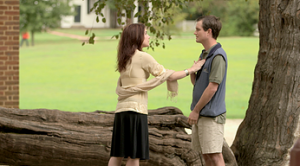There is little about an airport, a bus depot, or train station that I would think of as exhilarating. These way stations, these points of departure and arrival are dreamy places, often fusty and threadbare, atavistic relics of the exhilaration of travel when travel was taking root among the new middle class in the U.S. It seems, even, that by the time the new infrastructure is built, the remodeled terminal’s ribbon is cut and in a matter of just a few years, the features designed to freshen and impress become mere architectural assumptions.
Airports are dreamy places because, at least for me, I am nearly always tired by the time I get there, either from having to awaken at an awkward time or having arrived after sleeping fitfully at best en route. They are also dreamy because, although one is about to go someplace or get someplace, we sit in waiting areas because, well, we are waiting. Having now traveled for many years I rarely if ever plan a trip with a short connection. The stress of the rush to the next flight, ferry, or bus is not worth whatever convenience it might afford on the other end. So more than ever, the harbor is a place of waiting, and often a matter of waiting alone.
Bus depots, these days, are often louche, home to drifters and grifters, a homeless home for the homeless, with bathrooms devoid of toilet paper, toilet stalls whose doors don’t align, graffiti scratched in the partitions, and urine smells that hang in the air. One can be assured there will always be something out of order, whether that be a vending machine filled with expired candy bars or the entire women’s rest room, and if there’s an alley nearby you know that it would be best to avoid it, lest you inadvertently step on a used syringe. The internet has now replaced most ticket offices, which remain for decorative, nostalgic effect, or more likely, because the remodeling budget didn’t include enough dough for demolition.
One can, I imagine, live their entire lives without ever encountering a classic American way station, but that would be difficult now in days when at least some travel is within the reach of all but the poorest of Americans. It would be a shame, I think, but not everyone shares the sensations that I have when in an airport, or a port of any kind. As a portmanteau, it is easy to forget that an airport is an airplane port, a port like any other, a harbor whose waters run deep with stories of shelter, departures and reunions. The port shelters us from stormy seas, welcomes us, and nurtures us after and between long journeys. They are windows through which we glimpse opportunity and adventure, or smell the subtle scent of home approaching. It is the diving board from which we escape the tedium of life and trade it in for a guaranteed adventure, or, on the other hand, it is the place that welcomes us to the relative calm of a storm left behind.
They are not always welcoming places. Than Son Nhat airport in Saigon, for example, always seems as though I am walking into a steamy bee’s nest, perhaps an appropriate greeting, but still frazzling as hordes of humanity busily dash from one square meter to another and back again in what seems like a random pattern. I would prefer a softer greeting, but there is something refreshing about the slap in the face that this airport offers, just in case you had any delusions about serenity being in your short-term plans.
Yet, for each of these frantic airports, there are many more like Duluth, Minnesota, where there never seems to be more than a handful of people politely waiting to get through security, and the warmth of the indoor heating gives you a taste of the hearth and ingleside to come.
Whether frantic or placid, they all serve their purpose, and they all have those (now, sadly, mostly electronic) boards, inviting you to wonder and wander. There it is—Rio de Janeiro, Tucson, Manchester, Prague. Someone gets to take a ride among the clouds tonight. Someone will get to walk down a gangway and into a vessel that will pierce the sky on its way over continents, oceans, cities and farms. Someone will get to leave this port and land at another. Someone will make their dreams come true.





